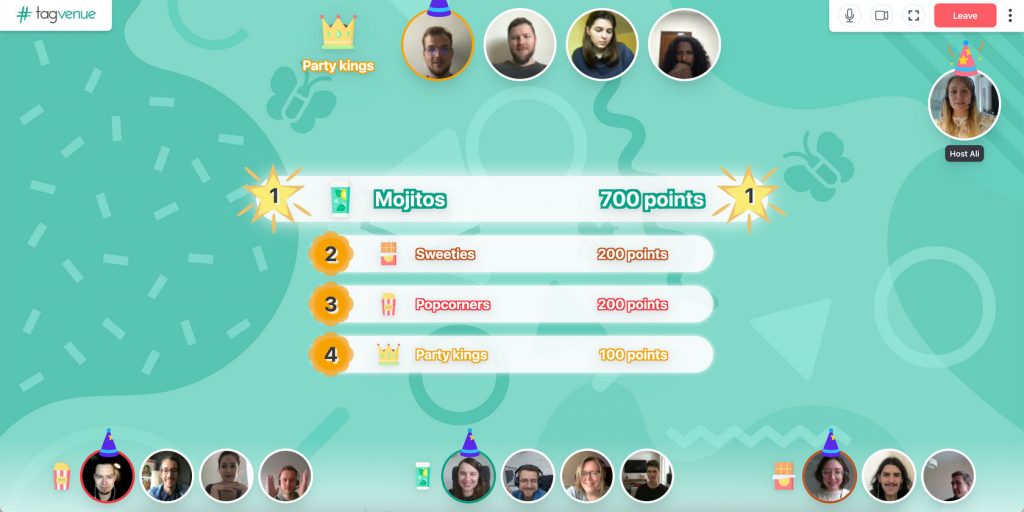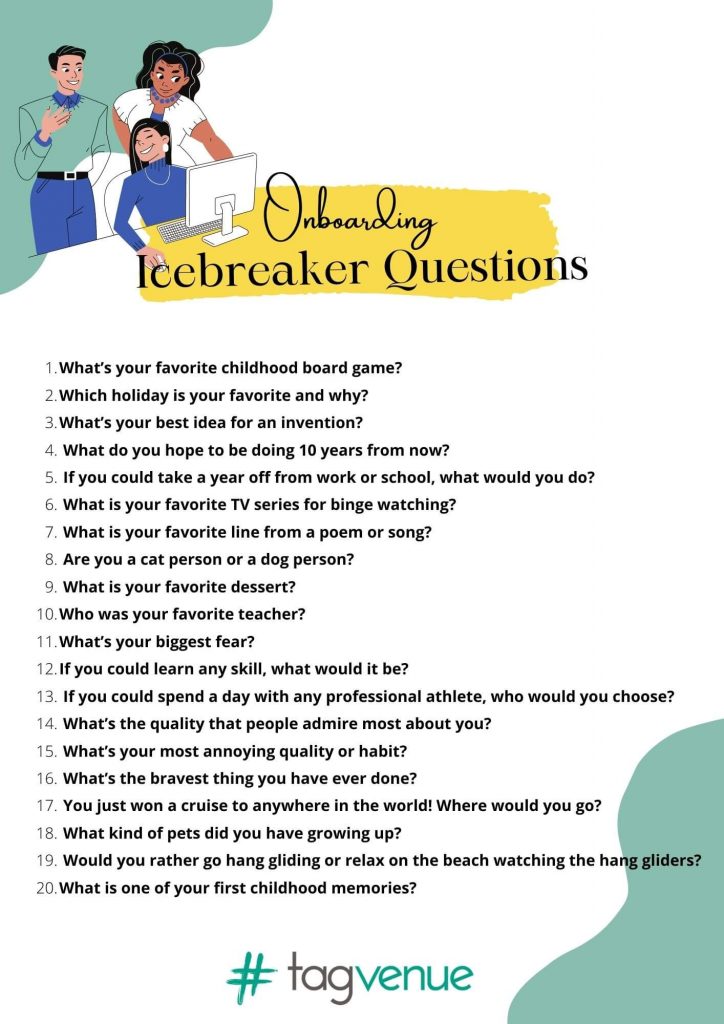
15 Tips and Activities for Onboarding Remote Employees in 2023
Remote work is on the rise, this was the case even before 2020, and the pandemic has only sped things up. According to Global Workplace Analytics, there has been a 159% increase in the number of people working from home since 2009. The percentage of teams that include remote employees is only expected to grow. Upwork’s 2019 Future Workforce Report predicts that by 2028, 73% of all departments will have remote workers.
This trend makes it important for companies to revamp their processes to ensure they’re creating the best possible environment for remote workers. One important factor to address in this new workplace is the remote onboarding process. A good onboarding experience sets the tone for the entire employee-company relationship, helps new hires achieve peak performance much faster and increases employee retention.
In this article, we discuss the challenges of onboarding remote employees and suggest 10 key things that will improve your process and ensure that your company is at the top of its game.
What is onboarding? Offline vs online
Onboarding is the process of introducing new employees to the company. As opposed to orientation, it’s not a one-time event but is instead an ongoing process that can last from a few weeks to a few months, depending on the role and degree of expertise.
The purpose of onboarding is to ensure that new employees fully understand company processes and are fully equipped to do their job. They should also become aligned with the organisation’s goals and strategies, develop a good feel for the company’s culture and exactly understand the responsibilities and expectations that their role entails.
Online onboarding has the same objectives, but the process obviously differs. It requires more attention and planning, as you can’t expect your new hires to simply learn by observing how things are done by their colleagues in the office. Successful onboarding depends on several key factors, including the effective use of technology and, above all else, efficient communication. We explore the challenges and best practices of remote employee onboarding in more detail in the upcoming sections of this article.
Why do you need a good onboarding process?

Every company needs a good onboarding process, even more so in the case of remote work. It brings many benefits for both the new hires and the company.
I believe the onboarding process is super important in each and every organization. It helps to integrate new joiners with the company and very often creates unforgettable first impressions which may influence their decision to stay or leave the company. Research shows that 69% of employees are more likely to stay for three years if they had a great onboarding experience. With proper onboarding, the new person is able to catch up to speed with the company very quickly and become an efficient team member.
Magdalena Matejkowska, People & Culture Manager, Tagvenue
With onboarding done right, your new employees will have a clear understanding of what is expected of them from the start. They’ll know how the work is done and how to use all the tools they need to do their job. Instead of feeling stressed and anxious on their first day, they’ll feel supported and know where to find answers to their questions. If you nail this process, they will have already formed some connections and feel safe enough to ask for assistance when needed. They’ll already feel a strong connection to your organisation and a sense of belonging.
In turn, you’ll gain an employee who’s more engaged and aligned with the company’s strategy and has a deeper understanding of its mission and core values. They’ll also be able to reach a higher level of proficiency much faster. A strong onboarding process can also result in less turnout. If the employees have an excellent experience from day zero, they are more likely to stay loyal to the company. This ensures that the time and resources you’ve spent on recruitment don’t go to waste.
Keep in mind that the quality of your onboarding program will reflect on your company as a whole. This is your chance to make a good first impression, which will set the tone for the rest of your collaboration with the new employee. You want to make them feel that they’ve just entered a company that’s well-managed, has a strong culture and cares about its people!
A study finds that only 12% of employees strongly agree that their company has a great onboarding process. This means that a vast majority of organisations are overlooking this crucial aspect! So if you really want to attract and retain top talent, read on to find out how to do a better job than the 88% of companies who are not paying enough attention to their new hires.
The challenges of remote employee onboarding
The biggest challenge of remote employee onboarding is the distance. New hires cannot simply observe how things are done by their colleagues at the office. There are fewer opportunities for casual interactions, like stopping by the new hire’s desk to welcome them to the team or chatting over coffee during a break. It’s harder to form connections without being physically together, which can make new employees feel isolated and lost. Because of that, some may be less inclined to ask questions and seek out the help they need.
For me, the biggest challenge is to show a new joiner that on the one hand, we create a professional environment, but on the other hand, we genuinely like each other, have fun together and are ready to help in case of any problems. It’s also hard to describe the company culture, it’s something you have to feel for yourself.
Marta Pawlik, HR Administration Specialist, Tagvenue
As mentioned by Marta, our HR Administration Specialist, it may be difficult to explain the company’s culture to someone who’s not physically there to experience it for themselves. Being in the office makes it easier to grasp the general atmosphere, start making connections with fellow coworkers and even learn company-specific jargon. “Offline onboarding also gives an opportunity to hear company stories off the record which may be helpful in the process of settling in,” said Magdalena Matejkowska, our People & Culture Manager.
That’s why great efforts have to be made to integrate new hires into the remote team. Although it’s a demanding task, if done right, it can even have some advantages over traditional offline onboarding.
From my perspective, online onboarding is both challenging and demanding but also can be a great experience for the new person. If the online onboarding is well-designed, you can feel like a part of the company very quickly and very often it somehow forces managers to plan the agenda which does not always happen in the case of offline onboarding.
Magdalena Matejkowska, People & Culture Manager, Tagvenue
Because it’s still new and challenging, the virtual setting somehow calls attention to how important the process of onboarding new employees actually is. In the next part of this article, we dive in deeper and show you how you can improve this process at your company.
Remote onboarding best practices
If you’re looking for ways to streamline your remote onboarding process, we’ve gathered 10 tips that should make the job easier. Treat these as your remote employee onboarding checklist.
1. Design a clear remote onboarding plan

Before you go into this process with your new hire, it’s best to have a clear roadmap. It will make the whole thing more navigable both for you as a manager and the new employee you’re training.
A good onboarding plan should specify how long the process will last and what goals you want to achieve during this time period. The Human Capital Institute (HCI) states that in most companies, onboarding does not extend beyond the new hire’s first week (or even the first few hours!). Meanwhile, Gallup has found that it takes employees around a year to reach their full potential in a new job.
Tayla N. Bauer, author of Onboarding New Employees: Maximizing Success, points out that the first 90 days are crucial for the new joiners to prove themselves at their new job. That’s why experts suggest writing out the milestones for the first 30, 60, 90 days at the company. Make your expectations straightforward and determine how you’re going to measure success. It will create a clear guideline for the new hires and offer prospects for development. If they can visualise their future with you, they’ll be more likely to stay.
While putting together your plan, Bauer says it’s good to focus on the four Cs: compliance (training on the basic rules and regulations), clarification (role-specific responsibilities and expectations), culture (formal and informal norms that exist within the company) and connection (relationships the new hires are expected to build).
2. Get a head start

According to HCI, 83% of high-performing companies start the process of onboarding new employees before their first day. The sooner, the better! Don’t leave this off until the very last minute – this will make everything hectic and chaotic.
Starting early will help to relieve new joiners of their anticipation anxiety. They’ll feel much more confident on their first day on the job because they’ll already be prepared and know where to turn to with their questions. Plus, you’ll be able to keep up their enthusiasm in the period between the signing of the contract and the official start date.
With basics such as paperwork and other technical stuff out of the way, you’ll be able to focus on the nitty-gritty of welcoming your new hire to the family, introducing them to their responsibilities and giving them the proper training. Digitalising documents and using services such as DocuSign will help you speed up this process.
3. Organise the resources

Working from home often means the lack of a dedicated workspace. Find out what sort of equipment your new employee needs to be able to work remotely, be it a laptop, a phone, a headset, etc. Let them know what resources and benefits are available to them: whether your company can pay their Internet bills, ship them the equipment or reimburse them for any necessary purchases.
Help your new hire organise their home office setup well in advance, so they have some time to test out the new equipment and get a grip on the most important technology. Schedule a video call to give them training on how to use any relevant software and help them familiarise themselves with all the tools and systems they will be using in their daily work. Show them how to set up all the necessary accounts and add them to the company communication channels. Connect them with the IT department if they need support.
4. Make them feel like they belong

Welcome your new hires to the team and show how excited you are to have them on board! Introduce them to everyone on a video call, via a Slack channel or have them do their own intro. Make sure they meet everyone they’ll be working with, as well as people from other departments. Ask other team members to send them welcome messages and videos or go a step further and schedule informal meet-ups. This will make the newcomers feel included and reinforce the validity of their decision to accept your job offer.
Show your enthusiasm, but also make them excited to be working with you! Many companies choose to send their new employees welcome packs with branded goodies. The point is to help them feel connected to your organisation from the very beginning. It can be a nice gesture, but to really stand out, you have to think of ways to personalise your goodie bag.
Making new employees feel like they’re part of your tribe doesn’t have to be complicated, but putting together a few icebreaker activities to make them feel welcomed and appreciated from the start will pay off big time. Many companies offer welcome bundles to new staff which include company T-shirts and other goodies. This helps to establish a relationship between new employees and the company.
According to a LinkedIn survey, knowing about the company’s core values and culture is a top priority for 53 percent of new hires during the onboarding process. Onboarding, on the other hand, does not have to be boring. Host and personalise virtual events based on company beliefs and culture. People are visual learners, and if they can correlate vital information with images, they will remember it for longer. It’s also a great way for team members to get to know their new coworkers!
5. Create a company wiki

Many companies opt to compile a searchable handbook or company wiki that contains all the relevant information about company culture, all the rules (e.g. for taking leave of absence), the inner workings of the organisation, department-specific guidelines and FAQ sections. Remember to be extremely clear in these guidelines- some bits of information may seem obvious to you, but may not be to someone who has just joined the organisation.
Digitalising all the materials is an approach advocated by Dell: it helps to systematise the process of onboarding at a company with many distributed workers. It’s something we use at Tagvenue as well. Keeping everything in one place creates an easy point of reference. It’s a source that new employees (and the old ones too!) can always consult when in doubt.
You can add to it and edit the information as you gain new insights every time you onboard new employees. It saves time (because you can just point them to the relevant sections of the wiki), makes your remote onboarding process scalable and fosters self-sufficiency on the part of new joiners.
6. Balance self-sufficiency and collaboration

To reiterate the point we’ve made in the previous tip: it’s great to encourage your new hires to be self-sufficient and seek out the relevant information themselves. Allowing them to be autonomous lets them know that you believe they are competent and that you trust them to do the job right by themselves. But as already mentioned, one of the points of onboarding is to introduce them to their fellow coworkers and make them feel part of the team.
So instead of just throwing study materials at new hires, also give them tasks that require collaboration with other team members or even across departments. That way, they won’t feel lost and forgotten, they’ll be able to get a feel of the company culture in practice, and they’ll adapt much faster.
7. Portion the information and use active learning

When entering a new job, employees can be overwhelmed with the heavy load of information thrown at them from day one. They need time to absorb all the new knowledge and adapt. To facilitate this part, portion the information into smaller and more digestible bites and let them learn on their own time. This is also where the already mentioned wiki comes in handy.
Present the information in a fun and interesting way. Slides are okay if done right: huge chunks of text are a ‘no’, bullet points are a ‘yes’. Include infographics and videos. Information discovered in an interactive manner is easier to retain. Use materials that promote active learning! You can divide the knowledge base into modules and prepare a short quiz to be taken after completing each one of them.
Introducing gamification can result in far better engagement and quicker learning. Why not kill two birds with one stone and try some team building games that allow you to sneak in bits of knowledge about your company? You may like to try The Team Quest, an easy-going game with just the right amount of competition. Your dedicated Event Producer will help you design a game plan that’s tailored to your specific needs. With different types of challenges, your team will have a chance to learn and network at the same time!
8. Prioritise making connections

Another crucial part of employee onboarding is fostering connections between new hires and existing employees. We’ve already touched upon this briefly in the sections on welcoming your new joiners and assigning them tasks that require collaboration.
For starters, it would be a good idea to provide your new hires with an organisation chart that lists people in all the departments. That will give them an idea of who’s doing what. Invite them to team meetings (with the cameras on!), so they can get better insights into other people’s roles and responsibilities. At Tagvenue, even interns are invited to attend the weekly Town Halls. Even though those meetings may not seem closely relevant to their role at the beginning, it enables them to see how everything works at the company and what the other teams are doing.
Building healthy relationships with your remote employees is especially important, as they may often feel lonely and isolated. Do your best to make them feel comfortable, so they know it’s safe to reach out if they need help with anything.
“Rather than make their concerns known, most new hires actually self-censor their questions in the first few weeks, to avoid looking like that clueless noob to their new team,” writes David Burkus in his book Leading from Anywhere: The Essential Guide to Managing Remote Teams. “As the team leader, the burden falls on you to make sure their concerns are addressed and, more important, that they know they can voice any new concerns freely.”
It is not just the role of the HR department and the managers to make the new joiners feel welcome to the team, but also fellow employees. A popular and tested solution is to introduce a buddy system, where you assign an ‘informal mentor’ for your new employee who will be their direct contact person. It should be someone other than their manager, so they don’t feel too intimidated to turn to them with questions.
The role of the buddy is to introduce the new joiner to the culture and all the unwritten rules and conventions. It would be a good idea to put your new hire in contact with their buddy before their first day. That way, they will already have this connection before they officially start working.
Organising frequent events such as wellness activities, escape rooms, or virtual happy hour is a wonderful approach to establish connections between existing and new staff. Employees can talk about things other than work during these events, which encourages them to open up to their colleagues. Learn more about employee engagement activities in our blog post here.
9. Stay reachable

To ensure the onboarding experience runs smoothly, try to be as available as possible. Let your new hires know that your digital door is open if they have anything they’d like to discuss. Practice empathy. Check in with your new employees frequently to show support and make sure they have everything they need. Remember that it’s better to ‘overcommunicate’ than to not say enough.
It is vital that managers schedule regular one-on-ones with their new hires, where they can discuss progress, provide space for feedback or get personal and learn to know each other better. Research shows that 72% of new employees find one-on-one meetings with their direct managers to be the most important in the process of onboarding! So make sure you put them on your calendar and really commit to them.
10. Encourage two-way feedback

According to Live Career’s 2021 Study, half of remote workers feel that they don’t get the same amount of feedback they would receive in the office. Remember your onboarding plan with the milestones for measuring success? Make sure you actually communicate to your new hires how they’re doing in terms of hitting those targets. Tell them in which areas they’re being successful and what can be improved.
However, don’t forget that this is a two-way street. Encourage them to also provide feedback for you. Ask them about their experiences: What challenges are they facing? Are they getting all the help they need? Are their goals clear? Do they have any additional questions or suggestions?
That way you can not only ensure that your current new hires have the best experience possible but also gain valuable insights about what’s working in your onboarding and what still needs polishing. You can send a follow-up email, asking your new employees about their onboarding experience, have them fill out a survey or simply have a chat about this during your video check-ins.
This practice will help you implement changes if needed and improve the process for future joiners. For example, you can gather the questions asked by the new employees and add them to the collective resource, so the answers are already there for future reference.
Virtual activities for onboarding remote employees
Although social engagement and connection are sometimes lacking in remote and hybrid teams, team bonding is not as difficult as it may appear. Onboarding can be made more effective by organising activities that encourage connection and participation. Here are some of our top selections for employee onboarding:
Meet the intern
You may either go with a fully-hosted activity like the Ultimate Icebreaker, where you can use some Pictionary and fact-match mini-games to introduce the intern to their peers, or you can simply ask the intern to introduce themselves along with the rest of the team. Easy-to-host games like the Ultimate Icebreaker, on the other hand, only require 20-30 minutes of everyone’s time and are also easier for the intern’s first days, which might be awkward! This activity allows everyone on the team to unwind while the newcomer adjusts to their new job!
Go on a scavenger quest
Virtual scavenger hunts are a fun way for colleagues to get to know each other. By finding items around the house, or in virtual locations together, you discover and learn new things about one another.
Scavenger hunts were once exclusively an in-person activity, but with the rise of remote work, they can now be effortlessly hosted online. These games can be tailored to your firm’s specific needs. So go ahead and check out our scavenger hunt templates for free!
Ice Shaker

Make a list of icebreaker questions for all your onboarding sessions. You can use our free list for your future onboardings or simply write your own questions. Use Kahoot or Quizlet to make the activity interactive and entertaining for both veterans and new joiners. It’s an excellent way for new employees to be introduced to their peers. All you have to do is organise the event and set a date. Alternatively, you can opt for a fully-hosted event like Around the World and sit back and enjoy yourself with the team, but it all depends on your onboarding budget!
Runaway together
Literally! Virtual escape rooms are collaborative and challenging enough to get new joiners talking and brainstorming creative ideas. Decipher clues and solve puzzles together to ultimately win the game. Get rid of those first-week anxieties with our variety of innovative escape rooms. To welcome your new staff in style, we recommend Hansel and Gretel and Basements and Barbarians for their amazing graphics and plot. Working together to win the game will strengthen bonds between new and actual employees while also allowing everyone to relax for a time.
Online Coffee Breaks
Coffee breaks are famous for bringing people together in real life, but they should not be limited to the office. Schedule a virtual coffee break, or ‘fika’ in Swedish, for new hires to be introduced and have some light chats about their hobbies, musical tastes, and other topics while enjoying some refreshments. Fikas have been shown to increase productivity and contribute to healthier work environments, thus they should be made mandatory for your staff from day one!
Key takeaways from this article
We hope that after reading this, you understand why every company needs a strong onboarding process. It helps to establish a connection between new employees and the company, lets them know what is expected of them, makes them feel included and increases the chances of them staying for longer.
Remember to come up with a plan and start executing on it early. Organise the necessary equipment, set up all the company accounts and train your newcomers on the technology. Refer them to your digital training resources, but also make sure you’re available to answer all potential questions. Try not to overwhelm them with information: use active learning and games!
Make sure you welcome your new joiners to the team and make them feel like they belong. Give them enough autonomy to show that you trust them, but also encourage them to collaborate with other members of the team. Help them build connections from day one, provide constructive feedback and listen to what they have to say in return!
For more tips to implement in your remote team today, check out our articles on cultivating healthy work relationships and creating a positive work culture.
FAQ
How do you onboard a new employee remotely?
When onboarding a remote employee, you should do everything you’d normally do in an in-office setup. You still need to give them a basic introduction to the company, provide them with all the relevant information and tools they need to do their job and make sure they meet everyone they’ll be working with. Doing that remotely, you’ll have to pay extra attention to your communication, schedule frequent check-ins and all-hands meetings with the rest of the team. Using digital materials like searchable handbooks and training videos will help you streamline the process.
How to improve your remote employee onboarding?
Come up with a detailed plan and start the process early. Help your new hires set up their home office (whether it’s by shipping the equipment or reimbursing necessary purchases). Assist them in setting up all their company accounts and train them on the software and communication platforms they will be using in their daily work. Pay extra attention to making them feel included. Create a searchable knowledge base and let them absorb the information on their own time. Foster collaboration across teams and help your new hires build meaningful relationships. Commit to regular one-on-ones and encourage two-way feedback.
How long should the onboarding process be?
Experts suggest that the onboarding process shouldn’t stop at the person’s first week, but extend well beyond that. It’s good to set milestones for the first 30, 60, 90 or even 120 days on the new job. The point is to keep them enthusiastic about the work. Set attainable yet challenging goals and constantly gather feedback. If you use those first weeks and months to provide your new hires with a great onboarding experience, guide them in the right direction and show how they can grow with you, they’ll be more likely to stay at your company over the long term.
How do you train employees remotely?
There are many ways to train your employees remotely. Schedule live training sessions via a video conferencing platform. Hold workshops and give your new hires tasks and exercises to complete. Prepare a digitalised and searchable handbook or a company wiki that can serve as the ultimate source of truth and point of reference. Use interactive training materials, like videos, quizzes or even fun games that will help your employees stay engaged and retain the information for much longer.
How to welcome your remote employees to the team?
To welcome your remote employees to the team, you can send them goodie bags with some company swag and a personalised note from the manager. Announce their arrival on Slack and get other employees to send them welcome messages or videos. Introduce them on a company-wide video call, so they have the chance to meet everyone on the team. Above all, show them how excited you are to have them on board!
How do you make remote onboarding scalable?
To scale remote onboarding, you should document the entire process. Create a detailed plan and keep all the training materials in digital form. Make sure everything stays editable, so you can add to it as you gain new insights every time you onboard new people. Gather feedback from your new hires and turn all the questions they may have into FAQ sections in your materials, creating a valuable resource for future joiners. Instead of holding live training sessions, you can record those that don’t require interaction in real time.
